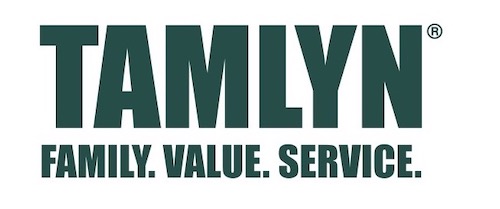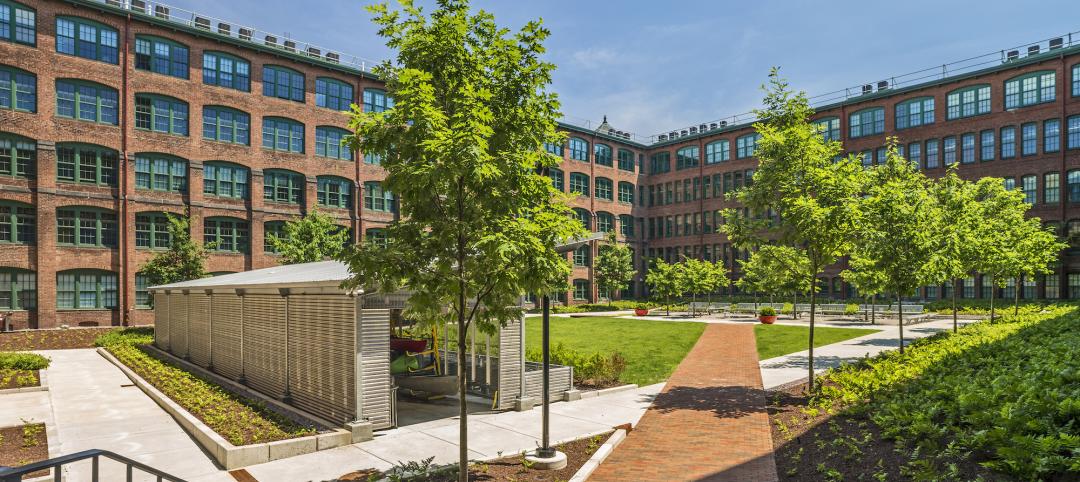With affordability and innovation for all: Multifamily housing ideas break barriers
With a growing need for multifamily housing solutions at all income levels, the U.S. market is seeing a proliferation of inventive projects.
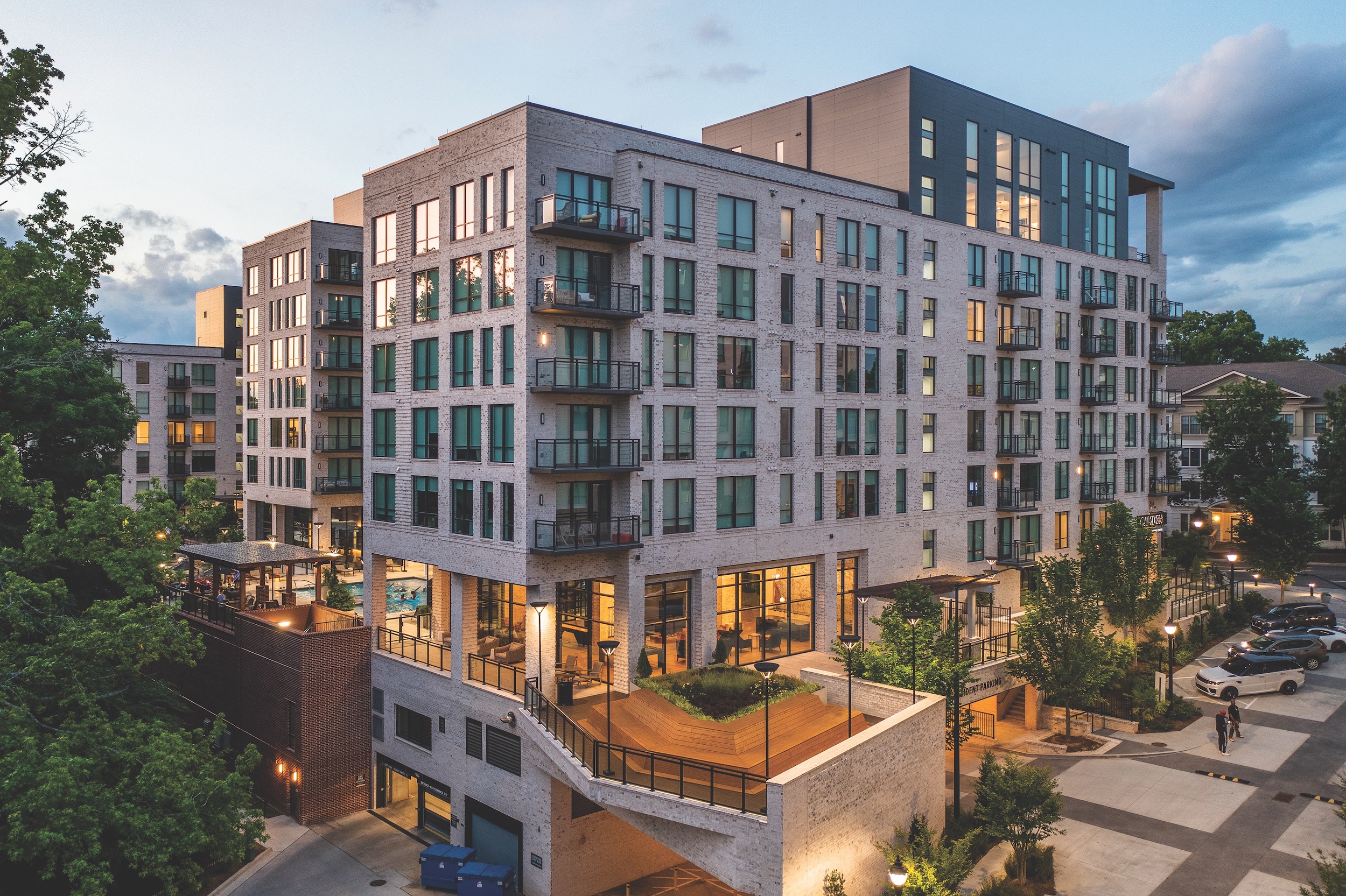
With a growing need for multifamily housing solutions at all income levels, the U.S. market is seeing a proliferation of inventive projects. Alongside the creativity is a nascent move toward higher quality, if not always larger unit sizes, with offerings of better amenities both inside and outside today’s latest residential solutions.
This movement is happening in spite of a tough economic climate: escalating interest rates and relative declines in unit prices, along with softer sales and leasing activity in many markets, say building teams nationally. In fact, according to leading experts, this “flight-to-quality” trend extends from the luxury realm and office building conversions to affordable and entry-level offerings in new developments.
“As with our market-rate projects, we insist on building affordable and low-income housing tax credit, or LIHTC developments, with the same quality materials and robust amenity packages as always,” says John B. Cruz III, President and CEO of Cruz Companies, a national developer, contractor, and property manager with a multifamily portfolio heavy in New England. “Our affordable apartment buildings offer units with 10% to 20% more square footage than comparables and the same amenities expected in our market-rate works: hardwood floors, granite countertops, balconies, community/recreation rooms, for example, along with elevators and welcoming, shared laundry facilities.”
Rejecting what he calls “plastic, Lego-type construction” seen in many recent developments for low-income renters, Cruz continues to build with full brick veneer façades on low-rise structures and thin brick on their midrise and high-rise blocks. Examples run from Cruz Companies’ four-story Taurus Building—completed 50 years ago—to the two-building 135 Dudley, now rising as part of the transit-oriented Nubian Square development in Roxbury, Mass. With a vision of enhancing the public realm in an area affected by 1960s redlining and systemic displacement, Nubian Square is injecting vitality into the former leading commercial center known as “the heart of Black culture in Boston.”
THIS COURSE IS SPONSORED BY:
Comprising a 60-unit, five-story affordable structure and a 10-story mixed-market-rate condominium building with ample underground parking and ground-floor retail, the Nubian Square design by The Architectural Team introduces a “light warm material palette paying homage to the neighborhood’s existing historic masonry buildings while introducing a more modern aesthetic.” Clad with a composite metal panel rainscreen with sandstone coloring, some units offer full-height window walls for broad views of downtown Boston. A wide sidewalk and a plaza with a café, plantings, and water feature welcome residents of both affordable and market-rate homes, as well as local NAACP offices, into the LEED Gold-tracking community.
Net-zero energy multifamily housing developments—and better
The building team’s experience echoes the goals of other novel housing approaches nationally. Net-zero-energy and Passive House projects such as the 44-unit 7 Van Buren in the inner-ring suburb of Oak Park, Ill., designed by Ware Malcomb with a team including Cullen Construction Management, are “replacing the amenity race with affordability, connectivity, and sustainability,” says Shay Cullen, the CM firm’s President. “Urban infill, adaptive reuse, and environmentally conscious building types are becoming critical factors in the multifamily development world.”
Conceived by nonprofit community developer Oak Park Residence Corporation “to encourage greater economic integration within buildings, increased accessibility, and higher levels of environmental sustainability,” says its Chairman Wayne Pierce, “7 Van Buren is created as a model for what the future of multifamily development can look like.” Topped with a commanding solar array, the six-story midrise adjacent to key transit lines offers 20% of its units for occupants earning at or below 50% of area median income (AMI), Pierce adds. Construction began last summer, reflecting a nationwide push for decarbonizing multifamily through tighter standards, incentivized reach codes, and the electrification of MEP systems.
Along with that drive for sustainability comes more focus on mass timber structures in varied multifamily settings. “We have actively engaged our R&D for mass timber design and construction, and each new project offers a potential use of cross-laminated timber,” says Brian Ward, AIA, Director of Design at architecture and landscape design firm Niles Bolton Associates. “It checks so many of the boxes for good design: sustainable materials, compressed construction times, warm interior aesthetics, and forward-thinking technologies.”
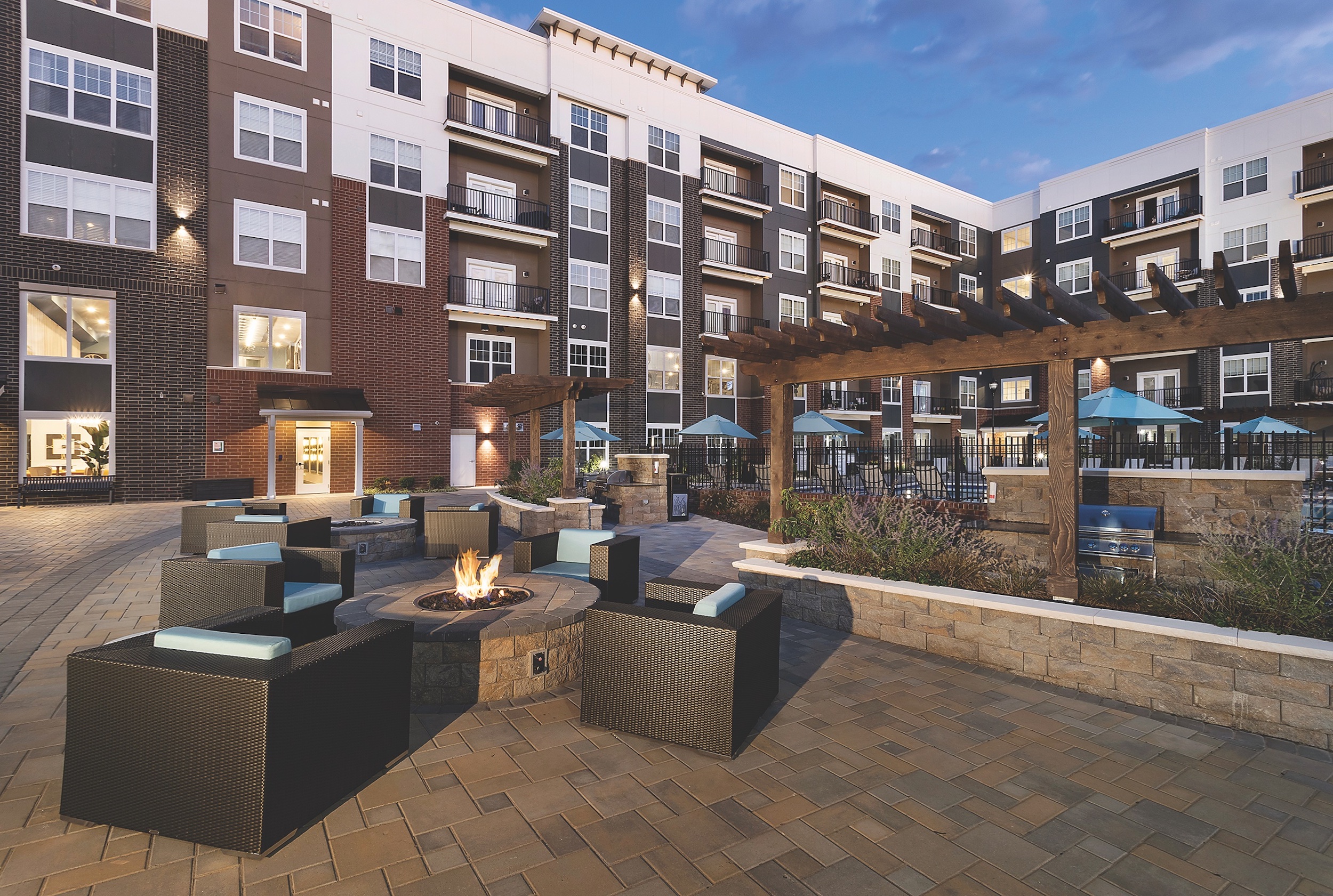
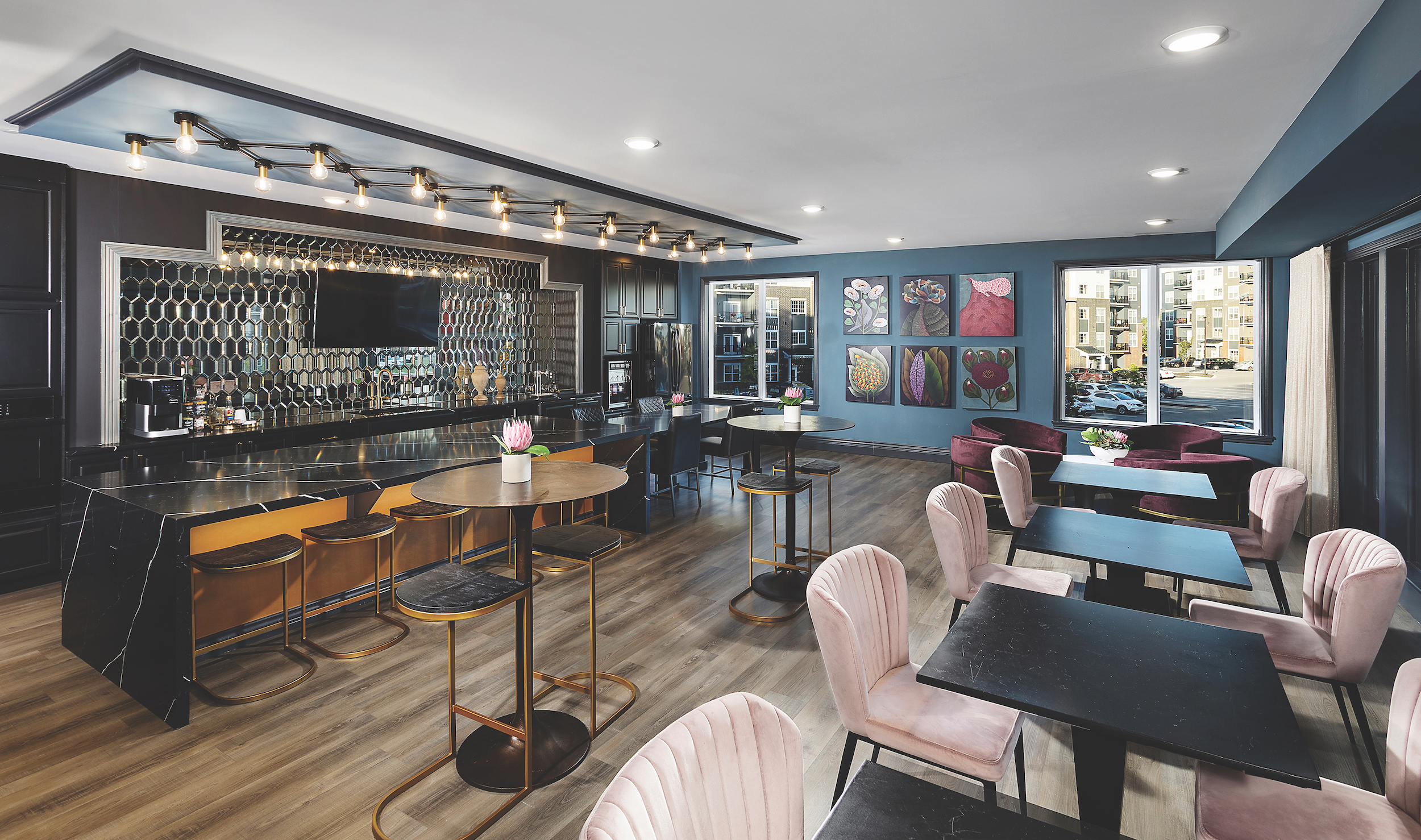
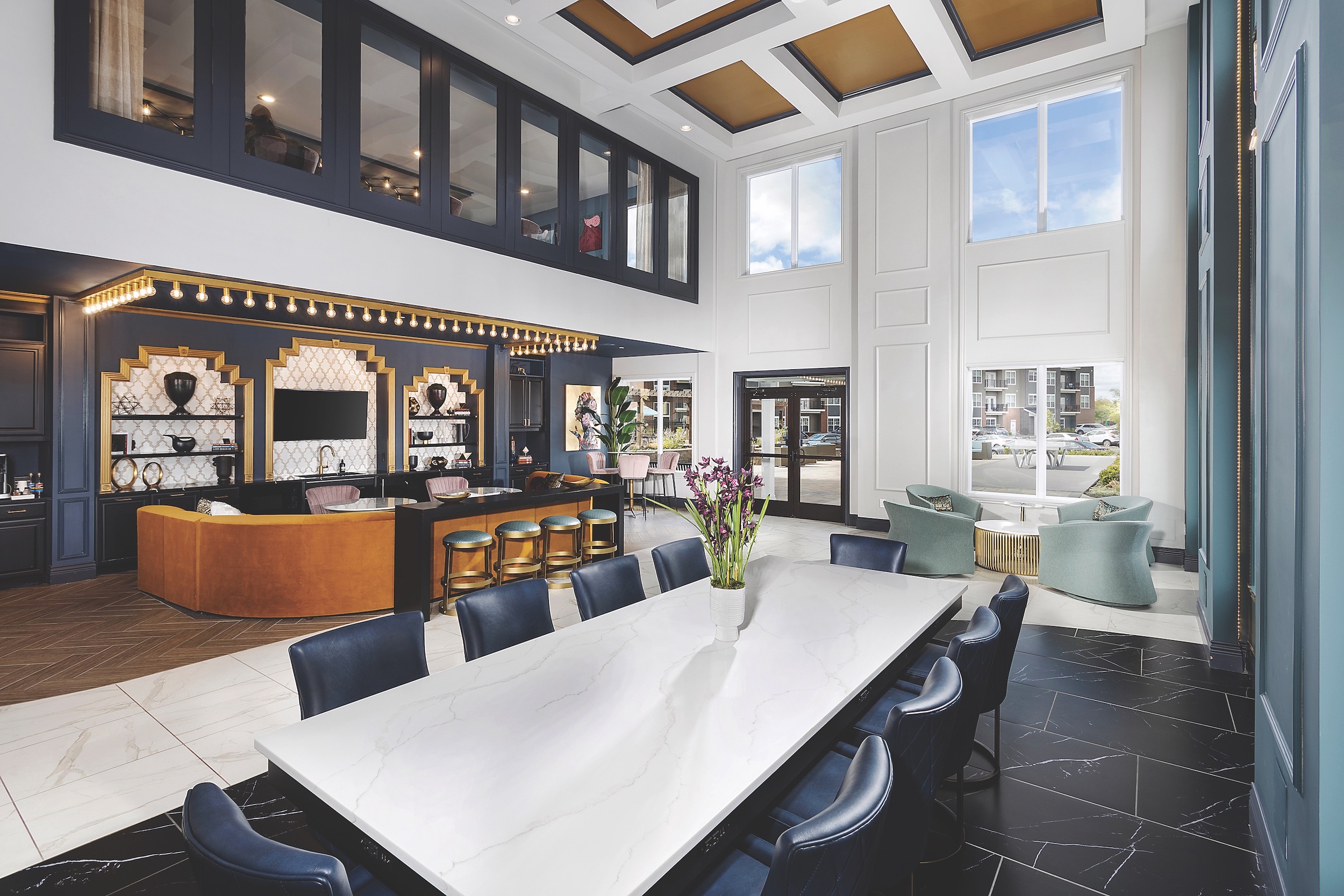
Examples of new works with timber and hybrid steel/timber structures include 79 King Street, a unique lifestyle rental in the college town of Northampton, Mass. Aimed at 55-plus residents, the project was developed by Live Give Play and mass timber expert Spiritos Properties, with a design led by BKSK Architects. “Our recent projects are focused on strategies redefining how we build going forward, given the existential crisis of climate change,” says Jeff Spiritos, Principal of the eponymous firm and formerly with Hines. “We are building both market-rate and LIHTC affordable with mass timber structures, which store carbon dioxide in the wood instead of emitting CO2 with concrete and steel structures.
“Mass timber buildings also have the benefits of being faster to build, with smaller crew sizes and less waste—and allow the wood to be exposed, creating a healthy, natural interior environment,” adds Spiritos. In some contexts, renters and buyers are actually inquiring with brokers for mass timber options.
Most of all, the drive to amenities is a theme echoed across the country, in all multifamily types from student housing to condominiums to senior communities. “Solutions are allocating more space within unit plans for work-from-home features as well as ample storage,” says Jeff Mulcrone, AIA, LEED AP, Partner at BSB Design. He echoes the push for larger usable balconies for connections to the outdoors, as well as features such as spas and common areas reflecting “the ambiance and sophistication of a resort, hotel, and luxury vacation.”
Mixed-use multifamily housing developments on the rise
The amenities motif extends to community gestures, say active building teams. “Many municipalities are requiring new apartment developments to have components of retail and restaurant spaces,” says BSB Design’s Mulcrone, providing “a variety of types of residential housing and the potential for the people needed to sustain a healthy retail environment.” Going beyond that, new and largely multifamily developments in major markets are also tied to new light industrial and commercial uses promising major economic impact. The reasons range from political incentives to economic development initiatives in central business districts (CBDs), according to Andres Sosa, Vice President of Gilbane Building Company, or in historically underinvested neighborhoods.
In Los Angeles, for example, the developers Victor MacFarlane of MacFarlane Partners and R. Donahue Peebles of The Peebles Corporation are “doubling-down on their multi-million-dollar effort to bring thousands of new jobs and economic benefits” via Angels Landing, a $2 billion vision with a twin-tower luxury hotel in Downtown Los Angeles, or DTLA. It follows on two transit-adjacent, mixed-use rentals in DTLA by McFarlane: the 347-unit tower Park Fifth and the 313-unit midrise called Trademark. A study by BJH Advisors shows Angels Landing would add over 800 permanent jobs plus 500 more through vendors. The construction phase estimates about 8,300 project jobs, too.
Other building teams are showing how 100% affordable communities can also bring mixed-use economic benefits—often with neighborhood-focused businesses, start-ups, and even nonprofit job generators. In the Bronx, N.Y., for example, The Peninsula replaces a hillside juvenile detention center with a five-building, five-acre mixed-use campus where the second of three phases is now in construction. The first two buildings completed include 183 of 740 total affordable units as well as a memorable light-industrial structure merging a food incubator with six small-scale food makers, refrigerated storage, and shelf capacity for surplus edibles. A rarity in the multifamily sector, an aerobic biodigester processes food waste into fertilizer for local use, including on the property’s green public spaces.
Developed by Hudson Cos., MHANY Management, and Gilbane Development Co., and constructed by Broadway Builders with MEP by Skyline Engineering, the end-uses reflect the Bronx neighborhood’s long-endemic food-making industry. The multifamily building even ties into the food theme: “Every unit provides undercounter bins for recycling and a caddy for food waste,” says Claire Weisz, FAIA, Founding Principal of WXY architecture + urban design, which designed the project with Body Lawson Associates Architects & Planners (BLA). “They will take these to the refuse rooms on each floor, which also host collection of small items like batteries.”
In other cases, mixed-generation occupancies add appeal: For the low-income seniors at Home Street Residences in the Bronx, a teen support center operated by Dreamyard energizes the ground floor. For similar reasons, the nearby 700 Manida mixed-use by RKTB Architects for MHANY Management and Nos Quedamos intermingles senior units with residences for individuals and families.
Are these kinds of amenities moving the market? Yes, contends Niles Bolton’s Ward: “Surprisingly, and perhaps due to the aftermath of Covid-19, clients are focusing more on comfort and practicality. Less golf simulator and more cycle centers with bike repair, larger pet spas, and access to outdoor spaces, including work hubs outside.” Such creative and widely needed solutions for community jobs and services also energize sidewalks and storefronts. “If the brick-and-mortar retail and restaurant isn’t on par with the desires of the residents and local environment, many developments end up with quiet streetscapes and dark ground-floor spaces,” says BSB’s Mulcrone, leading his building teams to intermingle amenity spaces with new retail businesses.
Multifamily developments embrace local culture and community
Clearly, all amenities are not created equal.
Believing that gentrification can be addressed through sensitive and profitable new multifamily works, New York-based developer and founder of Carthage Real Estate Advisors, Edward Poteat, is leading the 330-unit, 19-story “contextual development” Marcus Garvey Village to provide benefits for an entire community. With a market-rate first phase designed by Fischer + Makooi Architects and a 169-unit, 100% affordable building by Body Lawson Associates, about half of all the units are designated affordable income, based on 60% of the AMI.
In addition to an array of resident amenities, the buildings reflect the culture of the neighborhood, adding dedicated spaces for a first-floor LGBTQ center and rooms reserved for civic uses including local Community Board meetings. “All of the 169 new apartments are affordable for low- and moderate-income occupants,” says BLA Founder Victor F. Body-Lawson, FAIA. “They are clad in a distinct charcoal-gray brick veneer complemented by a scored stucco-look finish, unlike any other in the neighborhood.” Additional perks include an outdoor recreation terrace, storage, laundry rooms, lounge spaces, a recreation room, and on-site car and bike parking, he adds.
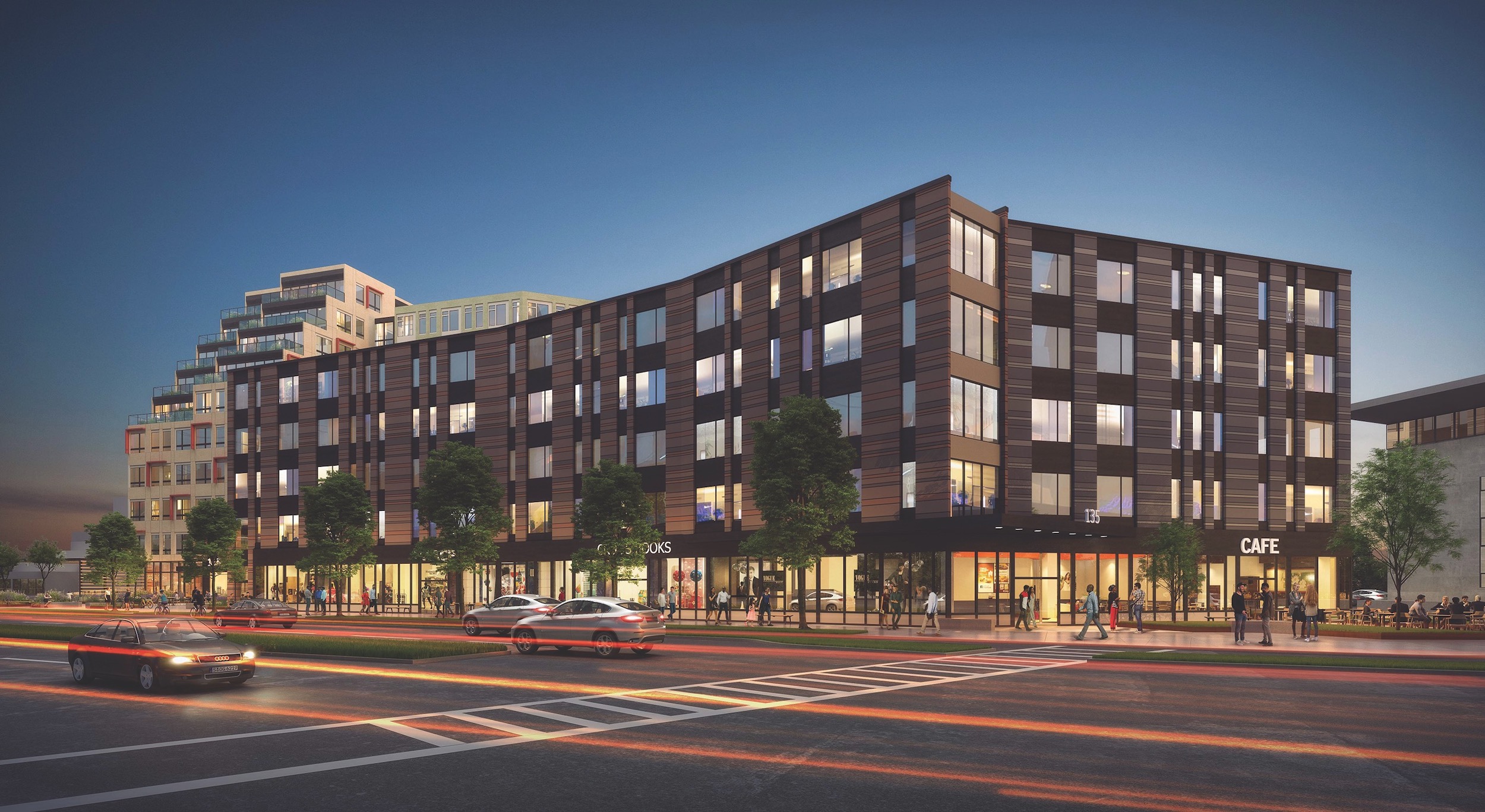
“Our mission with Marcus Garvey Village has always been to create a building that celebrates the spirit of this world-renowned neighborhood,” says Carthage Real Estate Advisors’ Poteat, a force behind affordable housing in Harlem for over two decades and a professor of affordable housing finance. “This project sets a new paradigm for development in the place where I grew up, with a model of responsible gentrification that is controlled and ultimately positive for the community.”
On top of housing costs, the higher-density and TOD initiatives like Marcus Garvey Village, Nubian Square, 79 King, and 7 Van Buren focus on the combined costs of living and transportation to boost affordability. “Multifamily projects in walkable urban neighborhoods have an advantage over those in car-dependent ones,” says David Fox, CEO of developer Live Give Play. “The cost of living anywhere must be looked at from a dual perspective: cost of the residence and cost of transportation.” He illustrates with a $3,000 per month apartment in a walkable neighborhood, allowing a couple to get by with one car—which is cheaper in most markets than a $2,500 per month unit in a more remote location, where the couple would need two cars. Fox cites AAA data showing the 2022 average cost of car ownership hitting an all-time high of $10,728 per year, or $894 per month.
For more affordable solutions near the urban core that also reduce transportation costs, building teams are collaborating on creative ways to capture vacant office structures for new housing opportunities. “We’re currently working on several adaptive office-to-multifamily reuse conversions,” says BSB Design’s Mulcrone. “This will be a trend in most markets as more and more people are working from home, and office space is no longer required to do business.”
Gilbane’s Sosa, who leads the company’s mixed-use and residential sectors, agrees: “We’re also watching for the increasing interest in conversion programs in the post-pandemic era as policymakers look to create mixed-use neighborhoods in some cities’ central business districts. We see the pressing need for affordable housing given the shortage facing many urban centers across the country.”
Here are the top challenges for office-to-multifamily conversion projects
While such promising opportunities abound as downtown commercial vacancies have soared in recent years, the obstacles to conversions are many. “Not all office properties can be easily converted to apartments or condominiums,” says architect and structural engineer Charles F. Bloszies, FAIA, whose firm designed the adaptation and expansion of San Francisco’s 1892 Chronicle Building into Ritz-Carlton luxury residences. “The ideal candidates are older, Class B structures fronting two or three open spaces or streets, with floorplate dimensions not too deep to allow daylight into the residential units.”
Mature buildings in established neighborhoods at the fringes of the downtown core, close to public transit, are perfect candidates, says Bloszies, who recently published a study of potential conversion sites across San Francisco. “Many of these buildings offer high ceilings, large operable windows, and street-level charm—ideal and attractive to many renters and buyers.”
Yet building code updates triggered by the change of occupancy from office to residences can be significant, including:
- Disabled access.
- New MEP and fire protection systems.
- Seismic strengthening (in some locations).
In addition, because these adaptive reuses often entail a costly and full interior renovation, Bloszies says, “It makes economic sense to add one or two new floors—or more—to amortize the cost of the new construction over a larger area or rentable or saleable square footage.”
For the 101-unit Ritz Carlton tower, the building team added eight new floors by strengthening original cast iron columns with reinforced-concrete jackets and adding an entirely new foundation system of reinforced concrete underpinnings inserted below load-bearing columns, arches, and walls.
Other recent works adapt city icons such as Chicago’s Tribune Tower Residences, developed by CIM Group and Golub & Co., or San Francisco’s 706 Mission Street, with the 1903 Aronson Building that survived two high-magnitude earthquakes and a major city fire. Both are luxury developments with historic commercial structures, though the 1925 Tribune Tower stands alone while 706 Mission, to include 146 residences by Four Seasons, is paired with a strikingly modern, 45-story new tower.
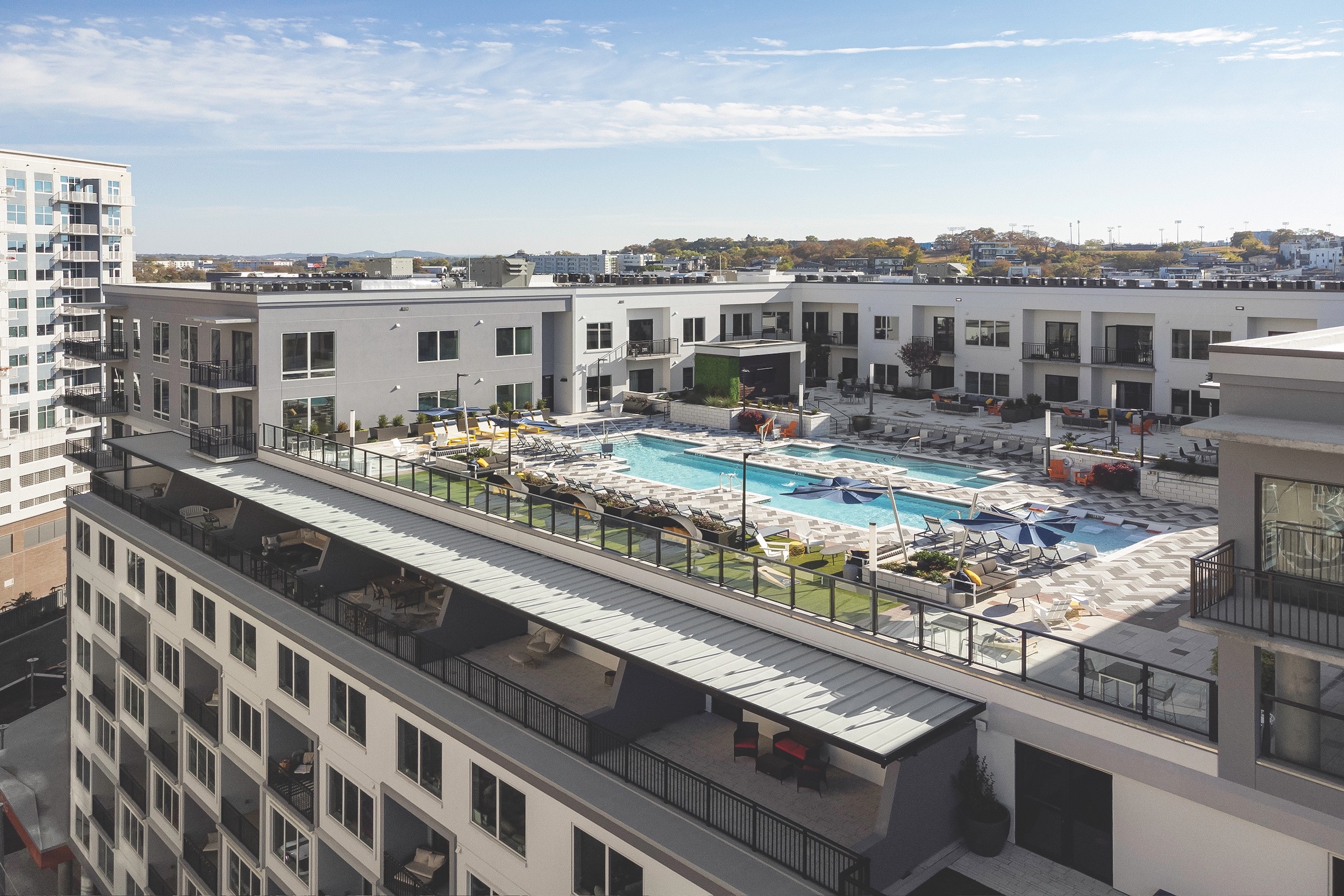
“Our collaboration on 706 Mission makes the most of this historic building, which is a treasured part of our city’s past, ensuring it will continue to be an active, vibrant part of the city’s life,” says architect Elisa Hernández Skaggs, AIA, Associate Principal with Page & Turnbull and Vice Chair of the Board at San Francisco Heritage. The firm’s architects and preservation experts were focused on preserving the noteworthy, elaborate façade, which inspired the vertical masonry Handel Architects included in its design for the adjacent tower. Page & Turnbull also oversaw the stabilization of the approximately 120,000-sf structure to make it fit for new uses and ensure continued long life.
In other cities from Miami to St. Louis to Boston, building teams are finding solutions for the cost, complexity, and code challenges of turning obsolete office product into multifamily. Not far from New York City’s Wall Street, for example, the team of MetroLoft, GFP Real Estate, and Rockwood Capital have engaged longtime conversion experts at architecture and interior design firm CetraRuddy for what may be the nation’s biggest adaptive reuse. The team announced a $536 million loan to redevelop 25 Water Street, a 1960s office block of about 1.1 million sf, into 1,300 apartments.
“With the current market, many real estate owners are finding that speed to market is essential today,” says architect John Cetra, FAIA, Founding Principal of CetraRuddy, which has done 40-plus conversions of office structures, hotels, industrial lofts, and more, ranging from interior updates to full gut renovations. “Turnaround time is now a key factor, and many developers are looking for strategies to create successful conversions through minimal interventions.”
While older office structures work well for multifamily adaptations, hotels can be very quickly converted with minimal redesign. “The key evaluative criteria for these projects are floor layout and egress, existing plumbing, number and locations of elevators, and availability of vertical riser ducts, pipes, or conduits,” Cetra says. “The project has to pencil out.” That’s why some cities, including Philadelphia, provide incentives such as tax abatements to boost conversion applications. Since 1997, Philadelphia officials boast over 180 residential conversions that increased its Center City population by 55%.
The benefits of more adaptive reuse are substantial. Cetra points to studies by groups such as the Real Estate Board of New York showing that if just one of every 10 Class B and Class C office buildings in “good locations” in Midtown and Lower Manhattan was converted, New York City would add about 14,000 apartment units. According to owner-operator Bernstein Management, the opportunity in Washington, D.C., translates to about one in every 20 office buildings, which would require about $400 or $500 per usable square foot to complete a conversion.
Bay Area-based Bloszies identified scores of locations for ideal for conversions in San Francisco’s commercial center—potentially many thousands of units. Of those hundreds of buildings, however, a mere 12 sites offer the four exposed façades that would make them perfect for creating floor layouts full of warm, sun-dappled aeries with valuable city views.
Multifamily amenities influence materials and methods
While key drivers of multifamily product decisions range from energy efficiency and security to building resiliency and tenant convenience, it’s the push for better amenities that’s heavily influencing today’s specs and supplier choices. According to developer and construction executive John B. Cruz with Cruz Companies, easy access and ample parking, outdoor spaces, and neighborhood offerings top the list for tenants and buyers.
“Overall building aesthetics and the anticipated features and amenity desires for a particular cohort of tenants influence product decisions,” says Nancy Kleppel, Assoc. AIA, Co-founder and Partner for developer Live Give Play. “Rapid cost escalation and extended product lead times are influencing materials and methods decisions as well.”
In many choices for amenities, says Andres Sosa, Gilbane Building Co., a local flair is essential—for more than just aesthetic reasons. “Supply chain impacts and considerations are a core focus as we work with our clients to deliver speed to market,” he says. “Increasingly, we’re looking at opportunities to source products and materials locally to reduce costs and maximize scheduling efficiency.”
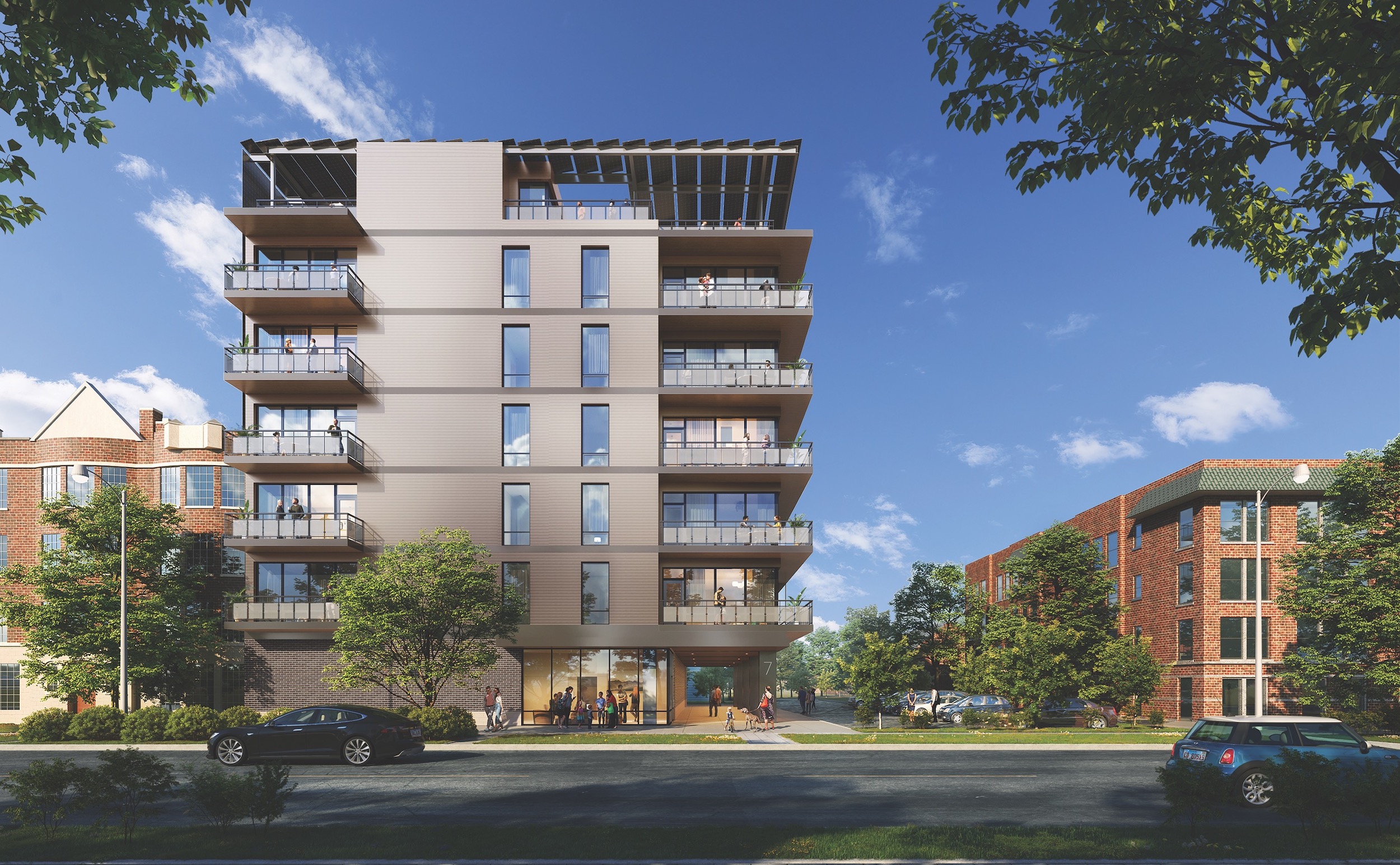
Efficiency is critical to operations as well as selling certain features. Building electrification brings opportunities to tout induction ranges, for example.
“In California, with the new Title 24 requirements in place as of January of this year, energy efficiency and carbon reduction have become a huge driver of the type of products that you use,” says Stephen C. Moore, CGP, Senior Partner with BSB Design, Des Moines, who sees more solar systems on low-rise projects, too. “The push is for all new homes to be all-electric eventually, so builders must show that each new home is set up for electric heat pump HVAC and water heating, at the minimum.”
According to Julie Janiski, Partner with engineering consultancy Buro Happold’s decarbonization team, “Aggressive decarbonization in the built environment is needed to reduce greenhouse gas emissions. One solution to support this goal is all-electric buildings that are connected to electrical grids supplied by renewable energy sources.” A study on the impacts for building teams shows the feasibility of the increasingly used approach.
Security, safety, and access control are also essential, adds the developer-contractor Cruz, who also leads a property management division. “Especially for project teams building in pioneering urban and exurban areas, cutting-edge security and smart home technology is essential to tenants and buyers.”
Another key factor influencing everything from foundations to windows to bath fixtures is speed to market. “It also holds true that time is money,” says Live Give Play’s Kleppel. “We are seeing significant consideration of a panelized approach to the building envelope for time savings and the anticipated increased quality offered by factory-based construction of major assemblies.”
Kleppel adds, “Anything that enables delivery of a completed building of uncompromised quality with a shortened schedule will enable incremental savings and earlier income.”
More Campus Related Content
Structural
Waterproofing deep foundations for new construction
Below-grade waterproofing systems can be critical features of building enclosure design, particularly when the structure has a deep foundation. As…
 course credit: 1.0 AIA LU/HSW
course credit: 1.0 AIA LU/HSW
Interior design/Interior architecture
Performance-based facilities for performing arts boost the bottom line
New technologies, innovations, and tools are opening doors for building teams interested in better and yet less-expensive performing arts facilities…
 course credit: 1.0 AIA LU
course credit: 1.0 AIA LU
Exterior
For the Multifamily Sector, Product Innovations Boost Design and Construction Success
It seems fitting that wider adoption of thin-shell concrete, a technology popular worldwide but somehow unfavored in the U.S., has resulted from the…
 course credit: 1.0 AIA LU/HSW
course credit: 1.0 AIA LU/HSW
Provided By: BD+C
Exterior
Fire safety considerations for cantilevered buildings [AIA course]
Cantilevered buildings seem to be everywhere in New York City these days, as developers and architects strive to maximize space, views, and natural…
 course credit: 1.0 AIA LU/HSW
course credit: 1.0 AIA LU/HSW
Provided By: BD+C
Exterior
4 steps to a better building enclosure
Dividing the outside environment from the interior, the building enclosure is one of the most important parts of the structure. The enclosure not…
 course credit: 1.0 AIA LU/HSW
course credit: 1.0 AIA LU/HSW
Provided By: BD+C
Exterior
Metal cladding trends and innovations
Metal cladding is on a growth trajectory globally. This is reflected in rising demand for rainscreen cladding, which market research firm VMR values…
 course credit: 1.0 AIA LU
course credit: 1.0 AIA LU
Provided By: BD+C
Structural
Flood protection: What building owners need to know to protect their properties
Historically, flooding is one of the costliest natural disasters in the United States on an annual basis. Flood Insurance Rate Maps (FIRMs) attempt…
 course credit: 1.0 AIA LU/HSW
course credit: 1.0 AIA LU/HSW
Provided By: BD+C
Multifamily housing/Apartments/Condominiums
Urban housing revival: 3 creative multifamily housing renovations
Bruner/Cott’s AIA award-winning inaugural project, the 1974 transformation of Boston’s expiring Chickering & Sons Piano Factory into the Piano…
 course credit: 1.0 AIA LU
course credit: 1.0 AIA LU
Provided By: BD+C
Structural
Steel structures offer faster path to climate benefits
Faster delivery of buildings isn’t always associated with sustainability benefits or long-term value, but things are changing. An instructive case is…
 course credit: 1.0 AIA LU/HSW
course credit: 1.0 AIA LU/HSW
Provided By: BD+C
Moisture Solutions
Solutions for cladding performance and supply issues
From a distance, today’s building innovations in cladding performance, aesthetics, and construction appear unconstrained and quite varied. Material…




